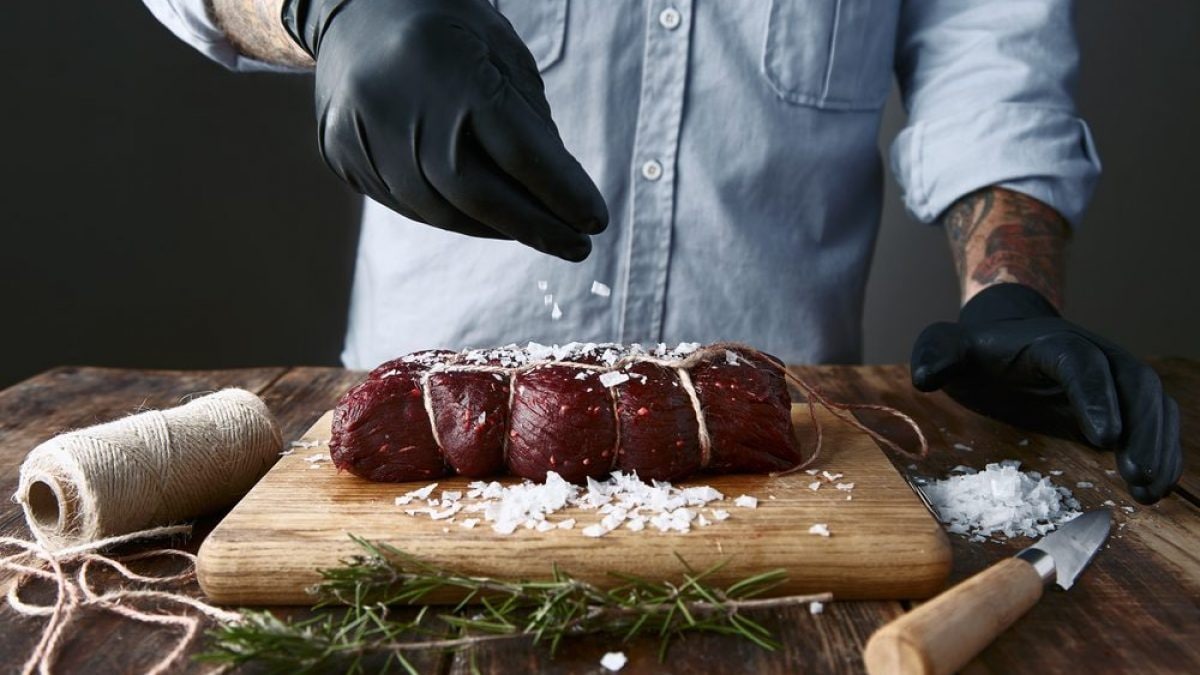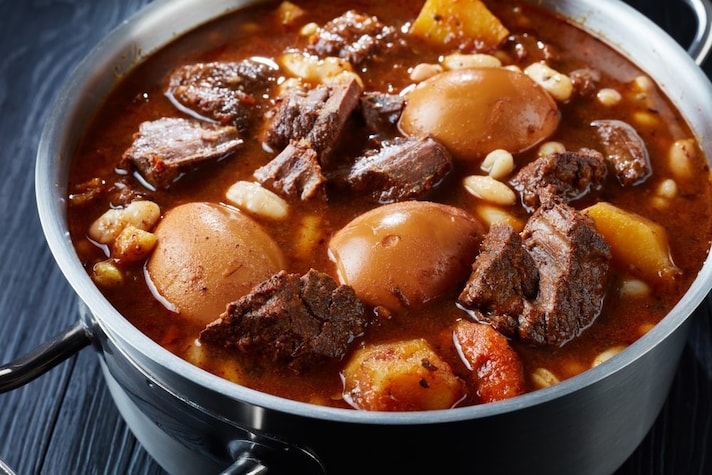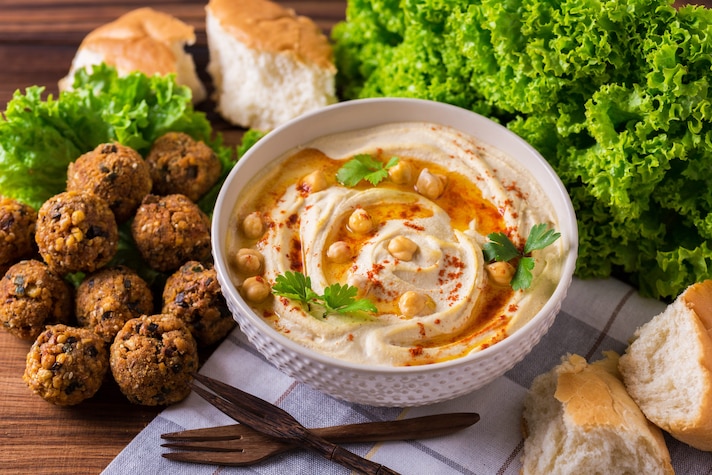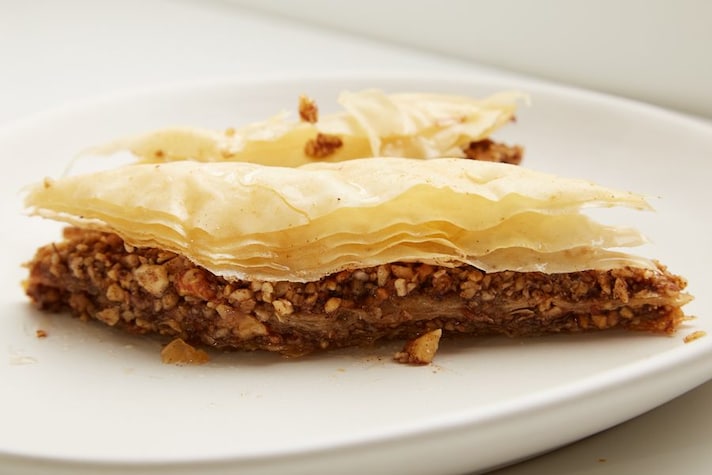
A daily expression of religious beliefs, but also of history and culture, kosher cuisine is a world apart. And if you have believed until now that Jewish cuisine and kosher cuisine were the same thing, you have always been wrong: kosher does not mean traditional, but “allowed”. In fact, it is the cuisine that respects the dictates of the Jewish religion regarding nutrition.
The Torah, the sacred text of the Jewish religion, establishes a series of dietary rules that believers must respect: there are many and complex rules, and for this very reason not everyone can follow them. In fact, not all Jews follow kosher cuisine: it is a type of diet that is the prerogative of those who are very faithful. Precisely for this reason, there exists – and coexists – a kosher cuisine and a traditional non-kosher Jewish cuisine.
Kashrut, The Set of Principles of The Jewish Religion
Kashrut is the set of precepts regarding food, rules that form the basis of the diet of every practicing Jew. They are based on the Torah, the highest reference of Jewish religion, and indicate what is “kosher”, or suitable: a term used above all for cooking, but which in reality can be applied to anything suitable for its use.
Most of the basic laws that make up Kashrut are found in the books of Leviticus and Deuteronomy, but the details and practical application were set down in the Oral Law – ultimately codified in the Mishnah and Talmud – and elaborated over time in rabbinic literature. The precise rationale behind the Kashrut laws is not specified in the Torah, and many theories have been advanced over time, including philosophical, practical, and hygienic reasons.

The Main Rules of Kosher Cuisine
Cooking kosher is not easy at all, and requires a controlled environment and a thorough knowledge of the many rules involved. To be consumed, food must meet certain precise criteria, which concern the origin, the characteristics of the animal, the preparation and its very nature.
- First of all, not all types of meat can be eaten: kosher cuisine only allows meat from animals that have cloven hooves and are ruminants, such as cows, calves, lambs and goats. All others are absolutely forbidden, especially pork, horse and rabbit.
- The meat must be slaughtered by a qualified rabbi, and the blood must be completely drained: it is forbidden, in fact, to consume the symbols of vitality of the animals, among which also include fat and sciatic nerve. It is not possible to eat meat that has been hunted, to be kosher the animal must necessarily be killed in a butcher's shop.
- Dairy products can be consumed but never together with meat, which must not come into contact with dairy products in any way. In fact, they cannot be touched even when frozen, they cannot be prepared with the same utensils (which must also be washed separately) and the transition from one food to another should take at least enough time for digestion. Some believers even prefer to have two separate refrigerators, one to store meat, one to store dairy products.
- As for birds, almost all are allowed except birds of prey, while fish can be consumed, but only those that have scales and fins, and that are easy to remove: therefore lobsters, crabs, cuttlefish, molluscs and fish such as sturgeon are prohibited (because it is difficult to remove scales and fins), while fish such as salmon, trout, grouper, hake or sole are allowed.
- Much attention is paid to raw materials – fruit, vegetables and the like – which must never contain the slightest trace of insects, which is why these foods must be immersed in water and salt or water and vinegar, in order to ensure that no trace remains. Fruit, cereals and eggs are considered “parve”, or neutral food: they can be cooked either with milk or with meat, and automatically follow the rules for consuming one or the other.
- In kosher cuisine, wine is a highly religious element: it can be consumed – usually on Saturday, or during holidays – but its preparation must be rigorously supervised by observant Jews, and the bottle must bear the name of the rabbi who issued the kosher certificate.
- As for leavened foods, they are always permitted except during Pesach, the Jewish Passover, as leavening symbolizes a violent instinct, while the holiday is a celebration of the commitment to freedom.

What Are Some Typical Kosher Meals?
Kosher Appetizers
Kosher appetizers often reflect the principles of Jewish dietary laws, which include avoiding mixing meat and dairy. Chopped liver is a classic starter, made from chicken livers sautéed with onions and hard-boiled eggs, often served with matzah or crackers. Another favorite is hummus, a Middle Eastern dip made from pureed chickpeas, tahini, garlic, and lemon juice. Gefilte fish, a traditional Ashkenazi dish, consists of ground fish (usually white fish like carp or pike), mixed with eggs, onions, and matzah meal, and formed into oval patties or balls, then poached and served chilled with horseradish.
Main Dishes
In kosher cooking, main dishes often rely on meat or poultry, prepared in accordance with kosher laws. Chicken schnitzel is a popular choice, made by breading and frying thin pieces of chicken breast. Another common main dish is brisket, typically slow-cooked until tender and often served with a rich gravy. Kugel, a baked noodle pudding, is also a comforting main dish, though it can be served as a side. It’s traditionally made with egg noodles, eggs, and sweetened with sugar and cinnamon or savory with onions and vegetables.
Soups
Jewish cuisine is known for its hearty and flavorful soups. Chicken soup with matzah balls (or kneidlach) is an iconic dish, often considered a cure-all, especially for the sick. The broth is made from chicken, vegetables, and herbs, while matzah balls are dumplings made from matzah meal, eggs, and oil. Another beloved soup is borscht, a beet-based soup that originates from Eastern European Jewish communities. It's typically served hot or cold and may be paired with a dollop of sour cream.

Side Dishes
Kosher side dishes often include vegetable-based dishes that complement the main course. Tzimmes, a sweet stew made from carrots, sweet potatoes, and dried fruits (often prunes or apricots), is a staple side. Israeli salad, a fresh, light mix of cucumbers, tomatoes, onions, and parsley, is often dressed with olive oil, lemon juice, and salt, offering a refreshing contrast to heavier mains. Potato kugel, another type of kugel, is often savory, made with grated potatoes, onions, and eggs, then baked to a golden crisp.
Desserts
Kosher desserts are often influenced by Jewish holidays and traditions. Rugelach, a pastry made from dough rolled around fillings like jam, chocolate, or nuts, is a popular treat for Jewish celebrations. Baklava, a sweet pastry made of layers of filo dough, filled with walnuts and honey syrup, is also a common dessert. For a more simple yet satisfying option, kosher brownies or chocolate cake made without dairy (using non-dairy margarine) are delicious choices. On Jewish holidays like Passover, flourless chocolate cake or macaroons made from shredded coconut are traditional desserts.

What is Eaten During Shabbat?
Shabbat, the weekly day of rest in Jewish tradition, is a time for reflection, family, and delicious food. It begins at sundown on Friday and ends at nightfall on Saturday, marked by special rituals and festive meals. The celebration kicks off with the lighting of candles, the blessing over the wine (kiddush), and the blessing over two loaves of challah bread, symbolizing the double portion of manna provided to the Israelites in the desert. The meal typically includes dishes like chicken soup with matzah balls, roast chicken, and gefilte fish, alongside sides such as kugel, tzimmes, and potato salad. For dessert, kosher treats like rugelach or babka sweeten the occasion.
What Happens if a Kosher Person Eats Non-Kosher Food?
For someone who follows kosher dietary laws, consuming non-kosher food can create a sense of spiritual and ritual disruption. Kosher laws, rooted in Jewish tradition, dictate what foods are permissible and how they should be prepared. Eating non-kosher food, such as pork or shellfish, or mixing meat and dairy, would be seen as a violation of these laws, potentially leading to feelings of guilt or disconnection from religious practices. While the consequences are not typically legal in nature, the act can affect a person’s relationship with their faith and community. Many observe a period of reflection and atonement, seeking to re-align with their values. The approach to non-kosher food can vary from person to person, but for most, it involves making efforts to return to a kosher lifestyle through prayer, repentance, and a commitment to the laws of kashrut.
;Resize,width=767;)
